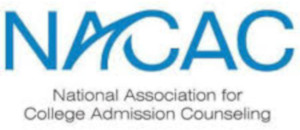When a slot machine pays out ten thousand dollars, sirens blare, lights flash, and young women in bathing suits crowd around to help pick up the explosion of spewing quarters. The joyful winner bathes in admiration and coins up to his ankles as joyful music plays and the crowd cheers. Gamblers at nearby machines smile and shout congratulations.
 |
The bets that don’t win, on the other hand, are not cause for celebration. Indeed, the near-silent “thunk” as the quarter slips into the bowels of the machine is the only indication that a bet has even been placed. That slot machines are now electronic rather than mechanical does not alter my argument. It’s hard to know just how many “losing” quarters are noiselessly filling the entrails. A discerning observer can only note that a $250,000,000 hotel does not build itself. The money has to come from somewhere. That somewhere involves a number of inserted quarters that do NOT result is sirens, lights, and bikinis.
 |
My subscribers are sophisticated enough to gamble only for entertainment if at all. No one reading these newsletters believes that a slot machine is a good long-term investment or that the expected value of those fleeing quarters is more than twenty-five cents. Yet these same erudite folks have been known to gamble their children in similarly senseless ways.
 |
Consider SAT courses. Your child’s score may go up hundreds of points as a result of short-term intervention. Cue lights, sirens, and bikinis. Or your child’s score may not improve. Thud. Thud. Thud. If your child’s score does improve hundreds of points, the likelihood or her being admitted to her top choice college may improve–wattage, noise, bathing suits. Or she may not be selected at the selected select school. Again, thud. Believing that every child who takes an SAT course has a significant score improvement is akin to believing that every quarter invested in a slot machine pays ten-thousand dollars. It ain’t necessarily so. And believe me: the parents of the “losing” children are not talking about their score. “Yes, I invested thousands of dollars and hour after hour of my child’s time, but her SAT score stayed at the same lousy 980.” Words no parent ever spoke.
 |
What about paying north of $30K/year for private day school tuition or double that amount for boarding school? If the schools are “selling” admission statistics at “top” colleges, you’re being scammed. Good students are admitted to good colleges. There is no reasonable argument on this point. High schools braying about the number of their students who get good results on AP tests or get admitted to HYPS* could just as well be proclaiming “we only admit kids with high test scores to begin with.” Just as a chicken is an egg’s way of making another egg, students admitted to HYPS are a high school’s way of justifying tuition. Not a news flash: Kids from public schools go to top colleges as well. Again, no parent ever said, “Yes, we paid a quarter million dollars for tuition at a private day school, but my child was rejected from every top college.” Thud. No one brags about the quarters that don’t “win.”
Full disclosure One: I taught SAT courses for decades. Many of the students whom I taught had scores that improved significantly. Many did not.
 |
Full disclosure Two: Any number of my own children attended wonderful private schools both day and boarding. At these institutions, my children learned to think critically and write well. They got moral instruction from the honor code. They learned from teachers who were exemplary in the classroom and out. They did community service, participated in athletics, and ate nutritious food. In short, their educations were extraordinary and worth every penny. But my kids didn’t go to “top” colleges as a result of their good high schools any more than wiggling in your seat increases the chances of having your quarter be the one that makes the sirens blare.
Loren Pope expressed the extraordinary experience of a good college education: “The magic lies in the moral and intellectual torque that the college exerts, not the name, however hallowed it may be.”
Now there’s a return on investment that can’t be beat.
|
|



